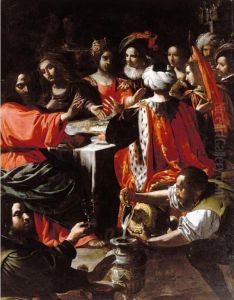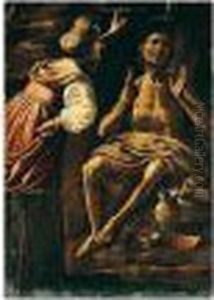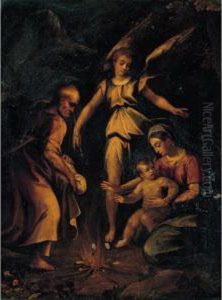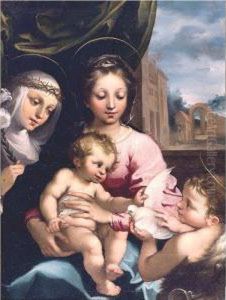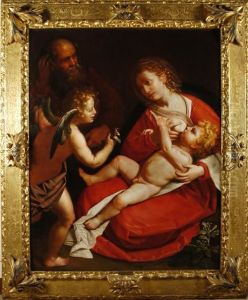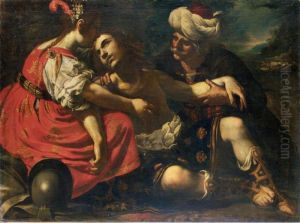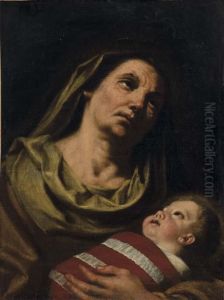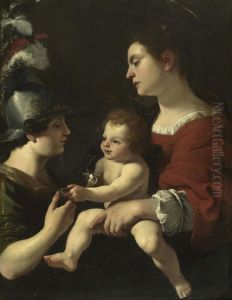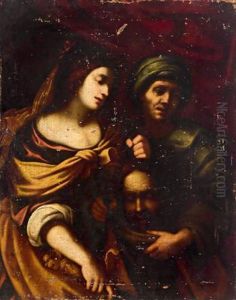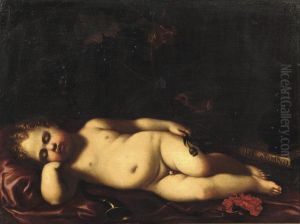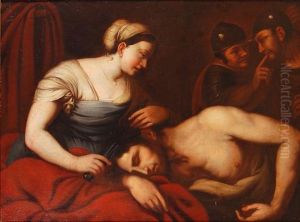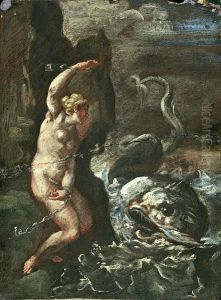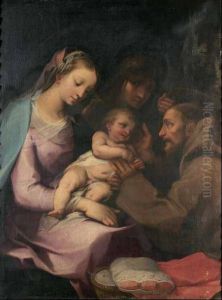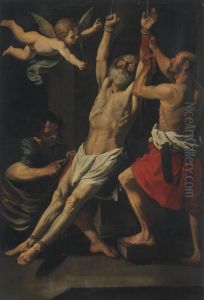Rutilio Lorenzo Di Manetti Paintings
Rutilio Lorenzo Di Manetti was an Italian Baroque painter active mainly in Siena during the late 16th and early 17th centuries. Born in 1571, Manetti was a significant figure in the transition from the Mannerist to the Baroque style, a period marked by a shift towards realism, emotion, and dynamism in art. His works are known for their vivid expression, attention to detail, and the dramatic use of light, characteristics that align him with the Baroque movement, even though he maintained some Mannerist influences in his compositions.
Manetti received his early training in Siena under the guidance of Francesco Vanni, one of the leading painters in Siena at the time. This mentorship provided him with a solid foundation in the Mannerist tradition, but Manetti soon developed his own distinctive style, incorporating the emerging Baroque sensibilities. Throughout his career, he executed numerous religious commissions for churches and monasteries in and around Siena, showcasing his ability to convey complex biblical narratives with emotional depth and technical precision.
One of Manetti's notable contributions to the art world was his mastery in depicting light, which he used to enhance the emotional atmosphere of his scenes. This skill places him alongside better-known contemporaries like Caravaggio, who is often credited with revolutionizing the use of chiaroscuro – the dramatic contrast between light and dark. Although Manetti did not achieve the same level of fame as Caravaggio, his works similarly demonstrate an expert control over lighting effects, contributing to the overall sense of movement and realism in his paintings.
Manetti's artistic output includes altarpieces, frescoes, and smaller devotional paintings, many of which remain in their original locations in Siena and its surroundings. His work not only reflects the religious and cultural milieu of his time but also serves as a testament to the transitional period in Italian art from the stylized forms of Mannerism to the more naturalistic approach of the Baroque.
Despite his contributions to the development of Baroque painting in Siena, Rutilio Lorenzo Di Manetti has not received the same level of scholarly attention as some of his contemporaries. However, recent studies have begun to shed more light on his career and works, recognizing him as an important figure in the history of Italian art. He passed away in 1639, leaving behind a legacy that continues to be appreciated by art historians and enthusiasts alike.
